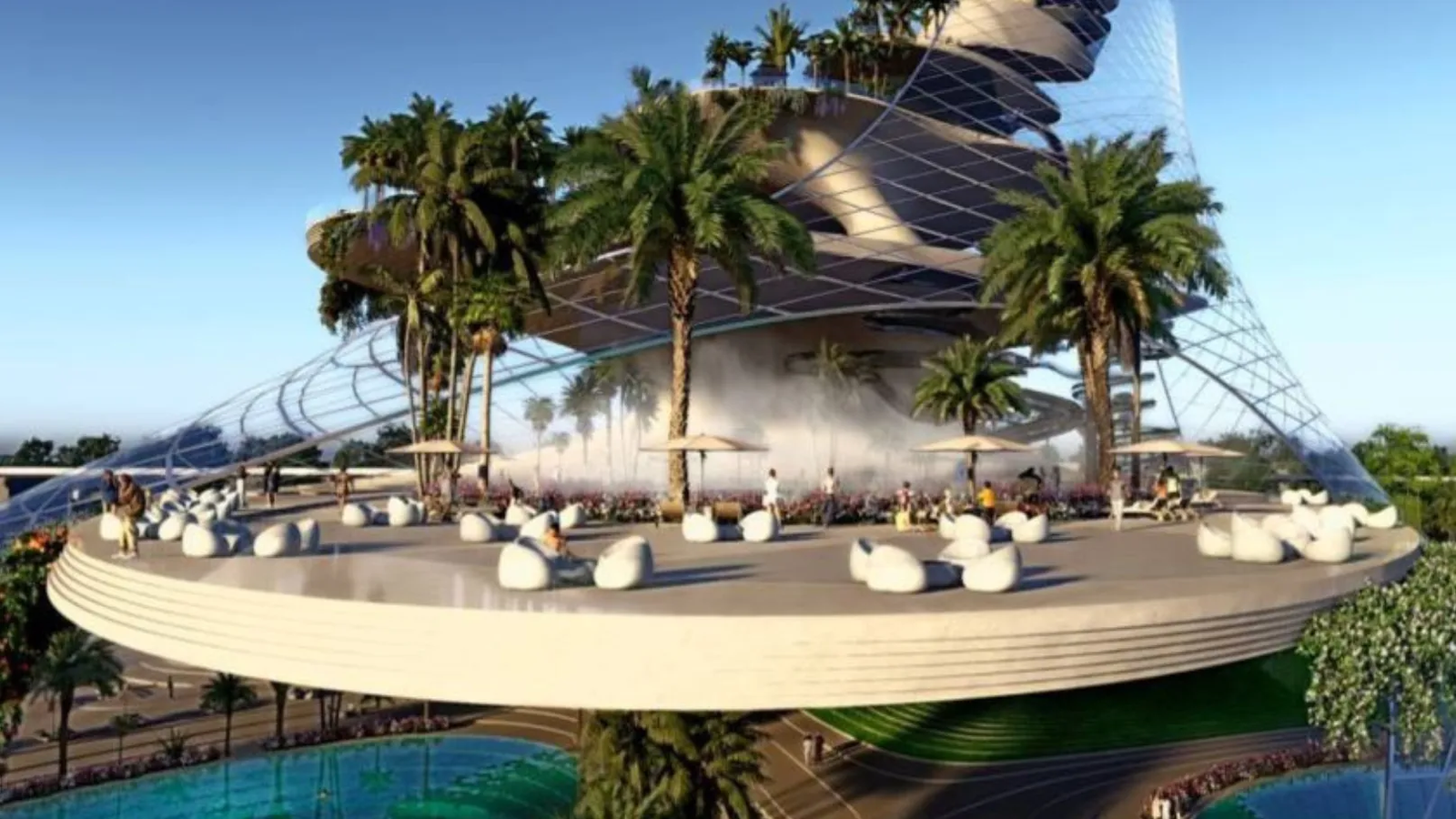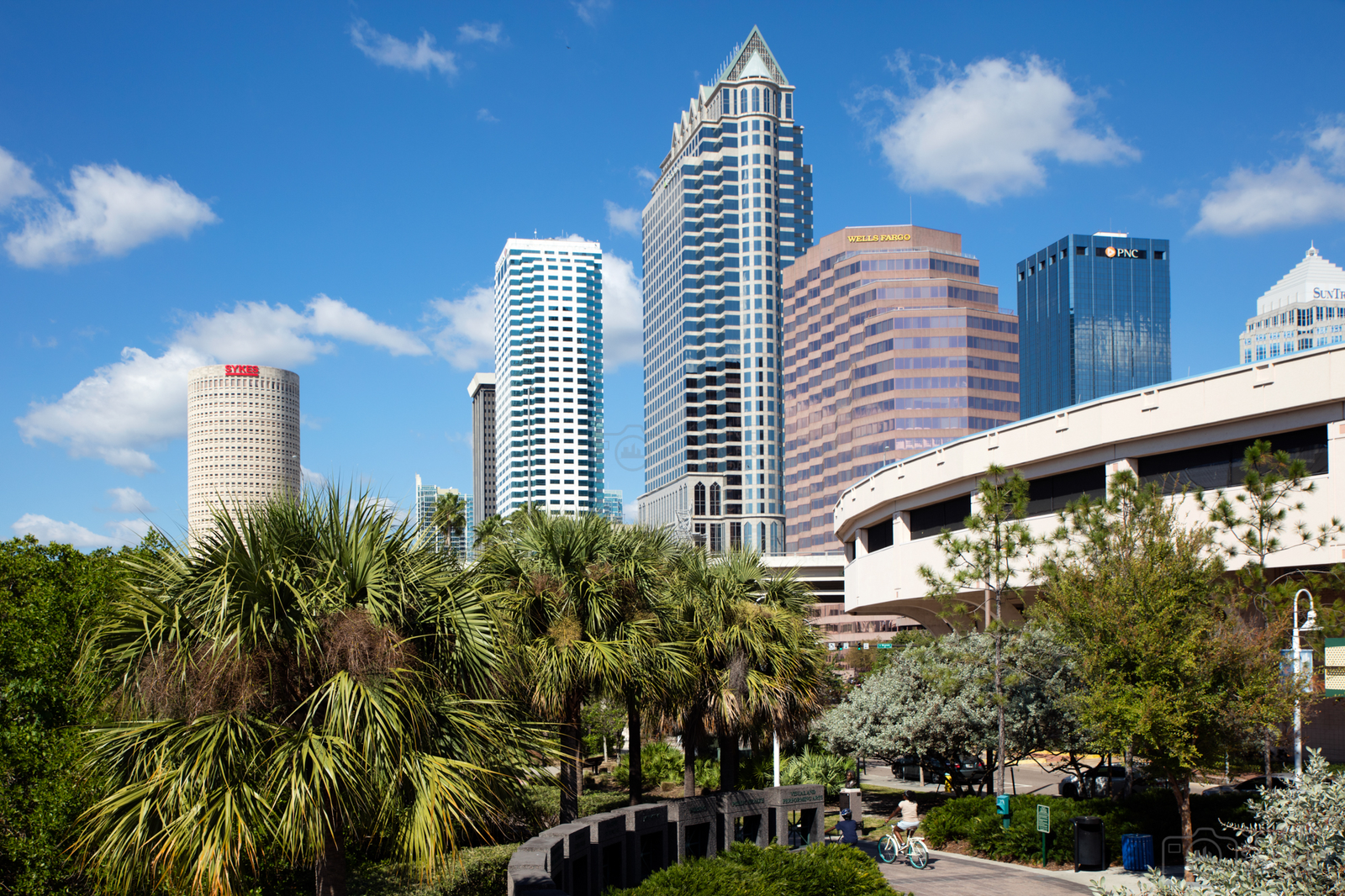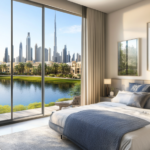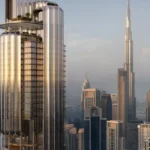Now Reading: Luxury Lifestyle Living in Dubai: 2025 Real Estate Highlights
-
01
Luxury Lifestyle Living in Dubai: 2025 Real Estate Highlights
Luxury Lifestyle Living in Dubai: 2025 Real Estate Highlights
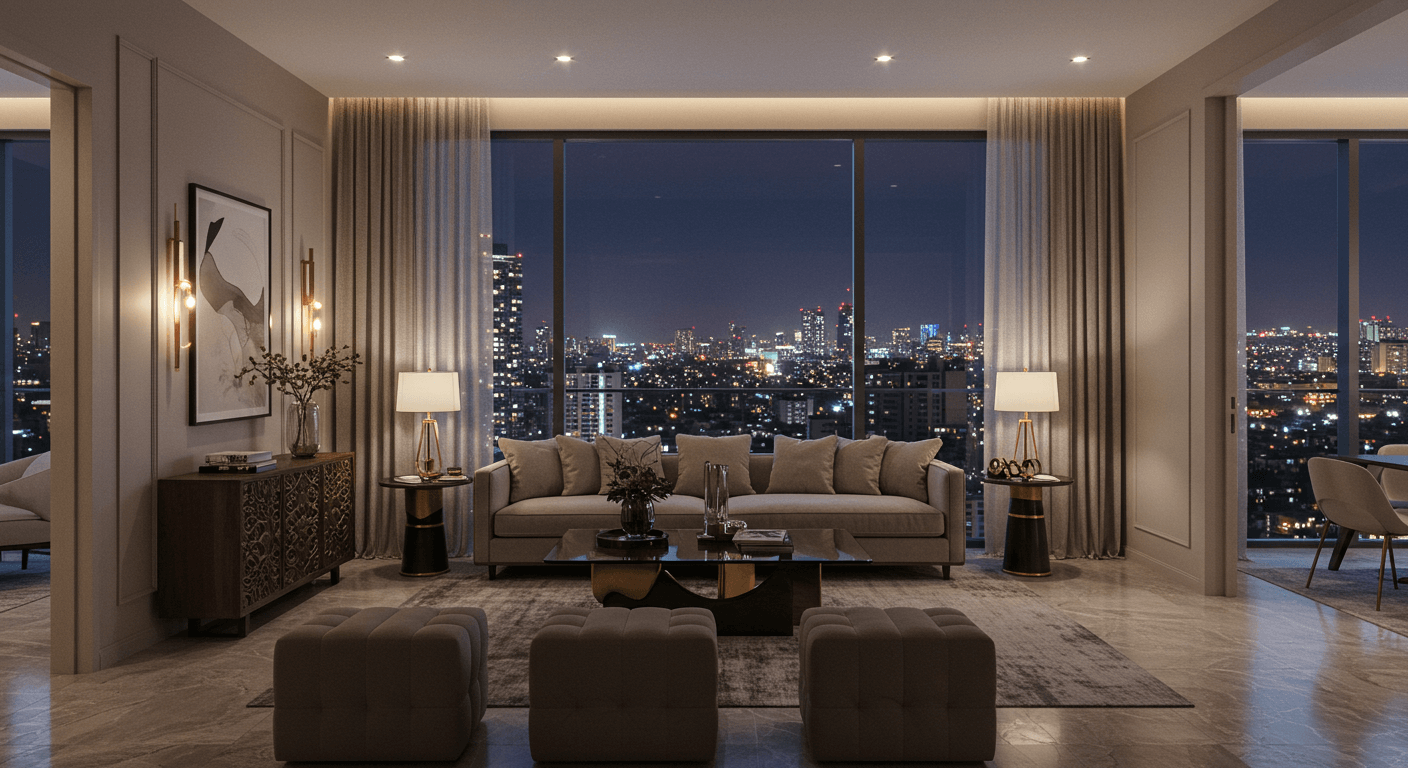
Table of Contents
Picture yourself in your Dubai villa, where a whispered voice command parts the curtains, revealing a golden sunrise over a private beach or a sprawling golf course. Your morning espresso brews in a sleek, smart kitchen, and floor-to-ceiling windows frame a world of elegance neighbors hosting brunches, professionals networking at a waterfront plaza, and families strolling through lush gardens.
You start your day with a private yoga session in a wellness suite, then relax by an infinity pool, feeling the pulse of a city crafted for opulence and connection. It’s August 2025, and Dubai’s luxury real estate market is soaring with projects like Emaar’s Dubai Hills Estate, Nakheel’s Palm Jumeirah, and Sobha’s The S Tower, each blending cutting-edge technology, wellness amenities, and unparalleled sophistication. With 96,000 transactions worth $87 billion in the first half, up 15% from 2024, and 55% of buyers from the UK, India, Russia, and China, Dubai is a global beacon of luxury.
Offering 100% freehold ownership, a dirham pegged to the U.S. dollar, and no personal income tax, capital gains tax, or annual property taxes, properties priced from $600,000 to $15 million deliver 5-7% rental yields and 7-10% price appreciation, outpacing London (2-4%) and New York (2-3%).
Properties over $545,000 qualify for a 10-year Golden Visa, while those at $204,000 grant 2-year residency. Fueled by 25 million tourists and a 4% population surge, these luxury homes are redefining elite living. Navigating fees, VAT, and 2025 regulations is your key to securing a radiant investment in Dubai’s thriving luxury market.
Dubai Hills Estate: Elegant Villas with Golf Course Serenity
Emaar’s Dubai Hills Estate, a 2025 jewel, offers luxury villas with golf course views, smart home systems, and wellness amenities like private spas and landscaped gardens. Priced at $600,000-$6 million, these villas yield $30,000-$300,000 annually, tax-free, saving $11,100-$135,000 compared to the U.S. (37%) or UK (45%). Selling a $2 million villa for $2.2 million (10% appreciation) nets a $200,000 tax-free profit, saving $40,000-$56,000 versus London (20-28%) or New York (20-37%). No property taxes save $6,000-$60,000 yearly, unlike London’s council tax (up to 2%) or New York’s property tax (1-2%). Residential purchases skip 5% VAT ($30,000-$300,000), and amenities like fitness trails drive 7-10% price growth. With 85-90% occupancy, this project attracts European and Russian buyers seeking serene, upscale living.
Dubai Hills Estate feels like a radiant, elegant haven for sophisticated lifestyles.
Palm Jumeirah: Iconic Waterfront Villas for Global Elites
Nakheel’s Palm Jumeirah, a 2025 icon, offers ultra-luxury villas with private beaches, smart security systems, and wellness amenities like infinity pools and private gyms. Priced at $2 million-$15 million, these villas yield $100,000-$750,000 annually, tax-free, saving $37,000-$337,500. Selling a $5 million villa for $5.5 million yields a $500,000 tax-free profit, saving $100,000-$140,000. No property taxes save $20,000-$150,000 yearly, and VAT exemptions save $100,000-$750,000. Maintenance fees ($10,000-$75,000) cover wellness hubs and biometric security, with a 5% municipality fee ($5,000-$37,500) on rentals. With 7-10% price growth and 85-90% occupancy, this project attracts Chinese and UK buyers seeking iconic, high-end living.
Palm Jumeirah feels like a radiant, luxurious masterpiece for global sophistication.
The S Tower: Sky-High Luxury for Urban Professionals
Sobha’s The S Tower, a 2025 highlight, offers high-rise apartments and penthouses with smart automation, rooftop wellness terraces, and panoramic city views. Priced at $800,000-$5 million, these properties yield $40,000-$250,000 annually, tax-free, saving $14,800-$112,500. Short-term rentals, boosted by 25 million tourists, require a DTCM license ($408-$816), increasing yields by 10-15% ($4,000-$37,500). Long-term leases need Ejari registration ($54-$136). Non-compliance risks fines up to $13,612. With smart kitchens and wellness lounges, these homes drive 80-85% occupancy and 7-10% price growth, delivering a 5-7% ROI. A 4% DLD fee ($32,000-$200,000), often split, applies, but zero capital gains tax saves $32,000-$200,000 on $160,000-$1 million profits. Indian and Russian buyers are drawn to this urban, wellness-driven luxury.
The S Tower feels like a radiant, sky-high oasis for ambitious professionals.
Wellness Amenities: Elevating Luxury Living
Wellness amenities are the soul of Dubai’s 2025 luxury homes, fostering health and serenity for elite residents. Dubai Hills Estate’s private spas offer bespoke treatments, Palm Jumeirah’s infinity pools provide tranquil escapes, and The S Tower’s rooftop terraces host yoga retreats, driving 80-90% occupancy. These features appeal to health-conscious Indian professionals, eco-focused European buyers, and active GCC residents, with 7-10% price growth reflecting demand for wellness-driven luxury. By prioritizing mental and physical well-being, these homes create vibrant, upscale environments that elevate both lifestyle and investment value, positioning Dubai as a global leader in luxury real estate.
Wellness amenities feel like vibrant roots nurturing thriving, elegant communities.
Smart Technology: Powering Seamless Luxury
Smart technology is the backbone of Dubai’s 2025 luxury homes, creating effortless, connected living. Palm Jumeirah’s biometric security ensures privacy, Dubai Hills Estate’s IoT systems control lighting and climate, and The S Tower’s automation integrates air purifiers, boosting 80-90% occupancy. Priced at $600,000-$15 million, these properties yield $30,000-$750,000 annually, tax-free, with smart features driving demand. Short-term rentals require a DTCM license ($408-$816), increasing yields by 10-15%. Long-term leases need Ejari registration ($54-$136). Non-compliance risks fines up to $13,612. These tech-driven homes, paired with 7-10% price growth, attract tech-savvy buyers from Russia and China, redefining Dubai’s luxury appeal.
Smart technology feels like a vibrant spark igniting seamless, opulent living.
Community Design: Fostering Elite Connections
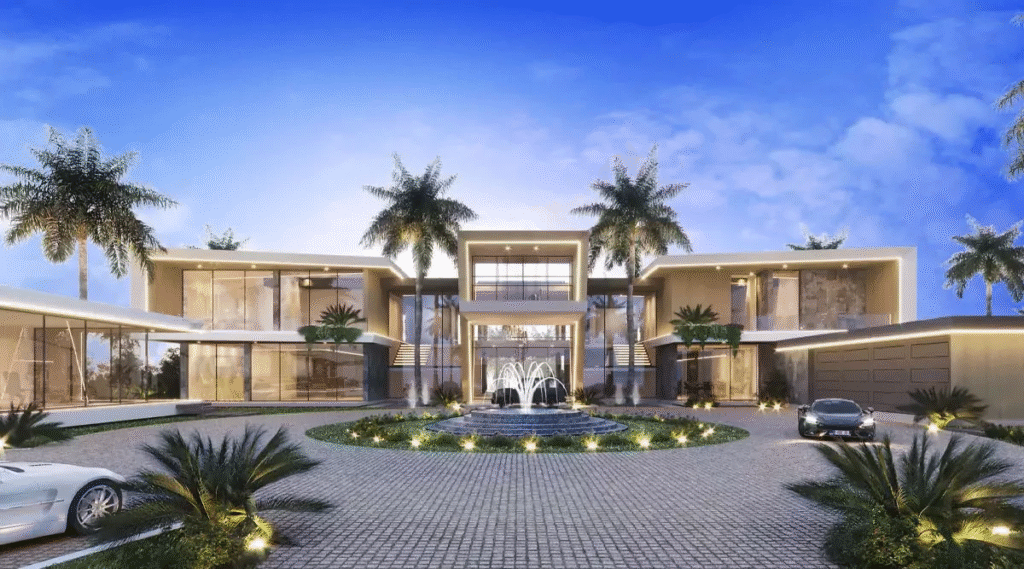
Community design in Dubai’s 2025 luxury homes creates spaces where global elites connect. Dubai Hills Estate’s golf course plazas host networking events, The S Tower’s rooftop lounges spark professional gatherings, and Palm Jumeirah’s waterfront promenades encourage high-end soirées, driving 80-90% occupancy. These designs attract diverse buyers entrepreneurs from India, executives from the UK, and investors from Russia fostering exclusive, multicultural networks. With 7-10% price growth, community-focused layouts blend luxury and investment value, making Dubai a global destination for elite living.
Community design feels like a warm embrace fostering radiant, elite connections.
Golden Visa Program: Attracting Affluent Investors
Dubai’s Golden Visa program, offering 10-year residency for properties over $545,000, is a key driver for 2025 luxury demand. A $800,000 S Tower penthouse qualifies, providing family sponsorship and business setup perks. Smaller properties at $204,000 offer 2-year residency, drawing entry-level investors from India and China. With 7-10% price growth and 80-90% occupancy, this program attracts UK and Russian buyers, creating stable, affluent communities. Unlike stricter residency rules elsewhere, the Golden Visa fuels demand for Dubai’s luxury homes.
The Golden Visa feels like a golden bridge to thriving luxury communities.
No Personal Income Tax: Empowering Financial Freedom
Dubai’s no personal income tax policy empowers investors, letting them keep 100% of rental income. A $600,000 Dubai Hills villa yields $30,000-$42,000, saving $11,100-$18,900; a $5 million Palm Jumeirah villa yields $250,000-$350,000, saving $112,500-$157,500. Short-term rentals require a DTCM license ($408-$816), boosting yields by 10-15%. Long-term leases need Ejari registration ($54-$136). A 5% municipality fee ($1,500-$17,500) applies, with fines up to $13,612 for non-compliance. High occupancy from wellness and smart amenities ensures this tax advantage drives luxury market growth.
Tax-free rentals feel like a refreshing wave of financial prosperity.
Zero Capital Gains Tax: Preserving Luxury Wealth
Zero capital gains tax lets investors keep 100% of sale profits, a key driver for these luxury homes. Selling a $800,000 S Tower penthouse for $880,000 yields a $80,000 tax-free profit, saving $16,000-$22,400. A $6 million Dubai Hills villa sold for $6.6 million delivers a $600,000 tax-free gain, saving $120,000-$168,000. With 7-10% price growth, these homes outperform global markets. A 4% DLD fee ($24,000-$600,000), often split, applies, but tax-free profits ensure wealth preservation for luxury investors.
Keeping every dirham feels like a radiant triumph of smart investing.
No Annual Property Taxes: Simplifying Luxury Returns
No annual property taxes save $6,000-$150,000 yearly on $600,000-$15 million properties, unlike London’s council tax ($3,000-$30,000) or New York’s property tax (1-2%). Maintenance fees ($6,000-$75,000) cover wellness hubs and smart security, with a 5% municipality fee ($1,500-$37,500) on rentals. This simplicity attracts investors seeking hassle-free returns in Dubai’s 2025 luxury market.
No property taxes feel like a gentle breeze easing your investment journey.
VAT Rules: A Strategic Financial Edge
Residential purchases skip 5% VAT, saving $30,000-$750,000 on $600,000-$15 million properties. Off-plan purchases incur 5% VAT on developer fees ($3,000-$75,000), recoverable via FTA registration ($500-$1,000). Short-term rental operators register for VAT if revenue exceeds $102,041, charging 5% but claiming credits on DTCM fees ($408-$816). A $2 million home yielding $100,000-$140,000 incurs $5,000-$7,000 in VAT, with $400-$600 in credits. Non-compliance risks fines up to $13,612, so diligent record-keeping is key for maximizing these investments.
VAT exemptions feel like a clever boost to your financial strategy.
DLD Fees and Title Deeds: Securing Luxury Wealth
The 4% DLD fee, typically split, applies: $24,000 for a $600,000 home or $600,000 for a $15 million villa. Gift transfers to family reduce DLD to 0.125%, saving $23,250-$581,250. Title deed issuance costs $136-$272, requiring DLD registration. Broker fees (2%, $12,000-$300,000) may be waived for off-plan projects like The S Tower. Mortgage registration (0.25% of loan, $1,500-$37,500) and valuation fees ($680-$1,360) apply for financed deals. The 2025 Oqood system ensures escrow compliance, securing investments in these luxury homes.
Title deeds feel like the key to your radiant, luxury wealth.
Corporate Tax: Navigating Luxury Investments
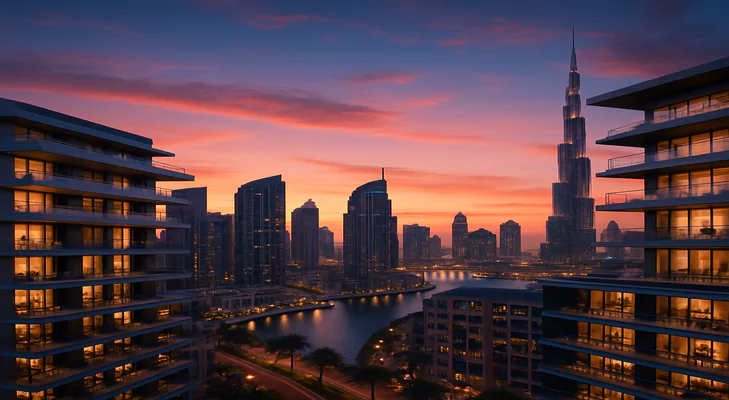
Introduced in 2023, the 9% corporate tax applies to profits over $102,110. A $5 million villa yielding $250,000-$350,000 incurs $22,500-$31,500, reducing net income to $227,500-$318,500. QFZP status avoids this, saving $22,500-$31,500, with setup costs of $2,000-$5,000. Small business relief waives tax for revenues under $816,000 until December 31, 2026. Individual ownership skips this tax, ideal for most investors in these luxury homes.
Corporate tax feels like a navigable ripple in your investment strategy.
New Tax Rules for 2025
The Domestic Minimum Top-up Tax (DMTT), effective January 1, 2025, imposes a 15% tax on multinationals with revenues over €750 million ($793 million). Individual investors are unaffected, and QFZP status avoids DMTT, saving $1,800-$52,500. Cabinet Decision No. 34 refines Qualifying Investment Fund (QIF) rules, exempting corporate tax if real estate income is below 10%. A QIF earning $1 million, with $100,000 from rentals, faces 9% tax ($8,100) on 90% ($900,000). A July 2025 policy allows corporate tax deductions on fair market value depreciation, saving $909-$13,636 annually for a $500,000 home revalued at $550,000. These rules enhance the appeal of Dubai’s luxury homes.
New tax rules feel like a puzzle with prosperous solutions.
Top Luxury Lifestyle Homes in Dubai for 2025
1. Dubai Hills Estate: Elegant Golf Course Villas
Dubai Hills Estate ($600,000-$6 million) offers 5-7% yields and 7-10% price growth, delivering a 5-7% ROI with private spas and golf views. A $2 million villa yields $100,000-$140,000 tax-free, saving $37,000-$63,000. Selling for $2.2 million yields a $200,000 tax-free profit. No property taxes save $6,000-$60,000, and VAT exemption saves $30,000-$300,000. Maintenance fees are $6,000-$30,000. QFZP saves $9,000-$12,600. U.S. investors deduct depreciation ($9,091-$54,545), saving up to $19,091.
Dubai Hills Estate feels like a radiant, serene sanctuary for elegant living.
2. Palm Jumeirah: Iconic Ultra-Luxury Villas
Palm Jumeirah ($2 million-$15 million) offers 5-7% yields and 7-10% price growth, delivering a 5-7% ROI with private beaches and infinity pools. A $5 million villa yields $250,000-$350,000 tax-free, saving $112,500-$157,500. Selling for $5.5 million yields a $500,000 tax-free profit. No property taxes save $20,000-$150,000, and VAT exemption saves $100,000-$750,000. Maintenance fees are $10,000-$75,000. QFZP saves $22,500-$31,500. U.S. investors deduct depreciation ($18,182-$136,364), saving up to $47,727.
Palm Jumeirah feels like a radiant, iconic masterpiece for global elites.
3. The S Tower: Sky-High Luxury Penthouses
The S Tower ($800,000-$5 million) offers 5-7% yields and 7-10% price growth, delivering a 5-7% ROI with rooftop terraces and smart automation. A $1 million penthouse yields $50,000-$70,000 tax-free, saving $18,500-$31,500. Selling for $1.1 million yields a $100,000 tax-free profit. No property taxes save $8,000-$50,000, and VAT exemption saves $40,000-$250,000. Maintenance fees are $8,000-$25,000. QFZP saves $4,500-$6,300. U.S. investors deduct depreciation ($7,273-$45,455), saving up to $15,909.
The S Tower feels like a radiant, urban oasis for ambitious professionals.
Why Dubai’s Luxury Homes Shine in 2025
Price Range: The S Tower ($800,000-$5 million) and Dubai Hills Estate ($600,000-$6 million) suit mid-to-high-tier buyers; Palm Jumeirah ($2 million-$15 million) attracts ultra-wealthy investors.
Rental Yields: 5-7%, with The S Tower and Dubai Hills Estate at 5-7% for short-term rentals; Palm Jumeirah at 5-6% for stable leases.
Price Appreciation: 7-10%, driven by wellness, smart tech, and community design.
Lifestyle: IoT systems, wellness hubs, and exclusive spaces create opulent environments.
Market Drivers: Golden Visas, tax-free income, and high occupancy fuel demand.
ROI Verdict: 5-7% ROI, blending luxury with strong financial rewards.
These homes feel like radiant pillars of Dubai’s thriving luxury market.
Strategies to Maximize 2025 Returns
For individuals: Hold properties personally to avoid corporate taxes, saving $1,800-$67,500. Negotiate DLD fee splits, saving $12,000-$300,000. Use gift transfers to reduce DLD to 0.125%, saving $23,250-$581,250. Recover 5% VAT on developer fees via FTA registration ($500-$1,000). Leverage double taxation treaties with 130+ countries, saving $11,100-$337,500. U.S. investors deduct depreciation ($7,273-$136,364), saving up to $47,727. For corporates: Secure QFZP status, keep QIF income below 10%, and claim depreciation deductions. Hire property managers ($6,000-$75,000 annually) and tax professionals ($1,000-$3,000) to avoid fines up to $13,612.
These strategies feel like a roadmap to vibrant, prosperous wealth.
Risks to Watch in 2025
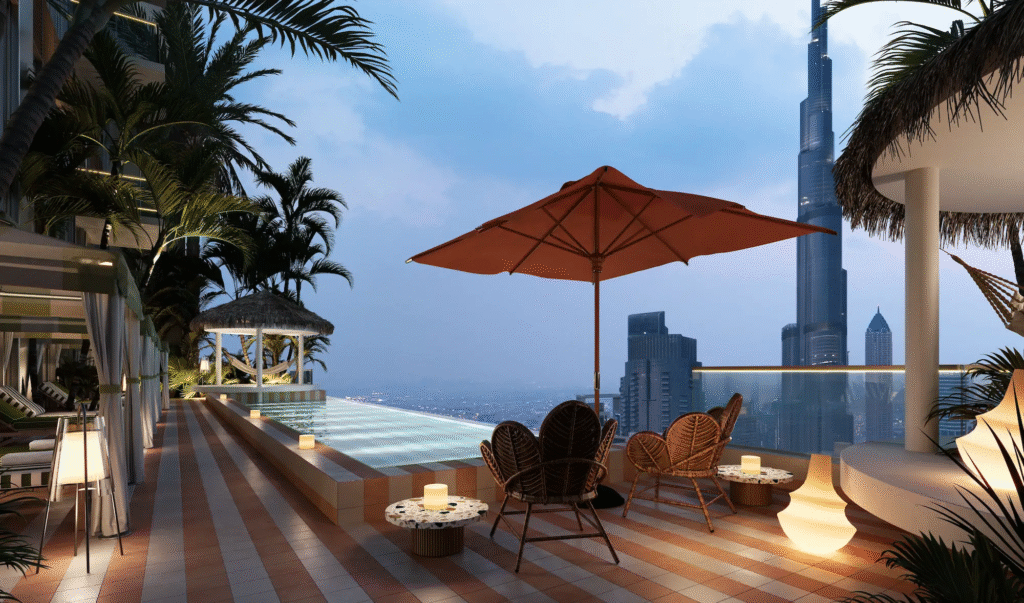
A projected oversupply of 182,000 units by 2026 may slightly slow price growth in newer phases of The S Tower, but Dubai Hills Estate and Palm Jumeirah remain resilient due to ultra-luxury demand. Off-plan delays risk setbacks, so choose trusted developers like Emaar or Nakheel and verify escrow compliance via the 2025 Oqood system. Non-compliance with VAT or DTCM rules risks fines up to $13,612, and corporate tax errors can cost $13,612. Indian investors must report properties in India’s Foreign Asset schedule to avoid $135,000 penalties. Currency fluctuations, though minimal with the dollar peg, could impact returns.
Why Dubai’s Luxury Homes Define 2025
With 5-7% ROI, 7-10% price growth, and tax-free savings of $6,000-$750,000 annually, Dubai’s luxury lifestyle homes Dubai Hills Estate, Palm Jumeirah, and The S Tower offer radiant residences, cutting-edge amenities, and unmatched financial rewards. Golden Visa perks, 80-90% occupancy, and opulent designs make them 2025’s top destinations for affluent investors. Navigate fees, secure your radiant investment, and thrive in Dubai’s dynamic, luxury-driven market.
read more: Wellness and Lifestyle Homes in Dubai Attracting Global Professionals



